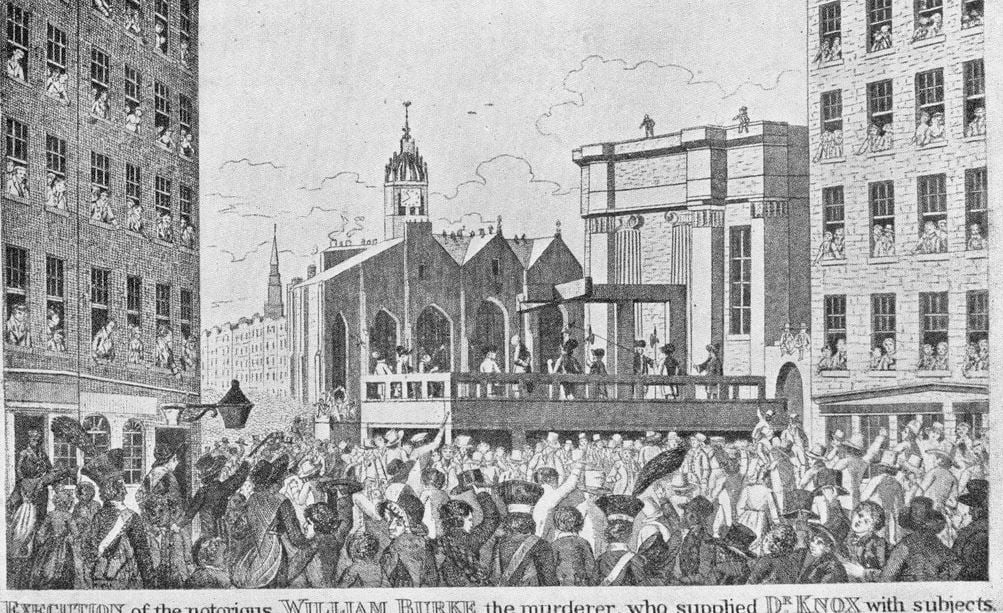For the first time in 180 years, members of the public will be able to watch human dissections at anatomy workshops that have been introduced by the University of Edinburgh in Scotland.
The University invites lay people to come and learn more about the human body through a series of hands-on demonstrations and lectures.
Each session lasts a day and costs £100 per person. They are the first to be held in Edinburgh since its medical school was embroiled in a spree of murders committed by William Hare and William Burke, who suffocated 16 victims and sold them to the faculty for around £7 each, which at the time was a lot of money.

William Hare and William Burke. (Image: Wikipedia)
The Anatomy Act was passed in 1832, banning all public dissections. However, since the Human Tissue Act 2006 (Scotland), universities have been able to bring back public anatomy lectures, as long as the human remains are dealt with “ethically and appropriately”.
Exclusive access
The experience includes “exclusive access to the dissecting rooms in one of the world’s oldest medical school,” the University wrote.
Those participating will spend the day learning from leading anatomy experts, and will also have the opportunity to explore what lies under the skin, literally, of cadavers that have been donated to the medical school.
All members of the public are welcome
The workshops aim to bring medicine closer to lay people, and remove some of its mystery by opening up anatomy to the wider public.
People from all walks of life can take part. The University says massage therapists and artists have already expressed interest, as well as medical students and other health care professionals.
Tom Gillingwater, Professor of Neuroanatomy at the University of Edinburgh, said:
“It’s remarkable to think that the average person probably knows less about their body than their equivalent in the early 1800s.”
“We’re hoping to bring anatomy back out of the shadows and provide access to world-class anatomy education for the general public.”
You can register your interest to attend at Edinburgh Anatomy Workshops.
The Burke and Hare murders
The Burke and Hare murders, also known as the West Port murders, were a series of killings committed over a period of ten months in 1828.
The murders were attributed to William Burke and William Hare, two Irish immigrants. They sold the corpses of their 16 victims to Doctor Robert Knox, who needed material for his extremely well attended anatomy lectures.

Burke’s execution in the Lawnmarket from a contemporary print. (Image: Wikimedia)
The murderers allegedly had two accomplices, Burke’s mistress Helen McDougal, and Hare’s wife Margaret Laird.
From their acts came the term “burking” (no longer used), which meant smothering a victim or to commit an anatomy murder. Later, the term referred to a cover-up (suppressing or hiding information).
At the time people were so scared of body-snatchers that relatives and friends would watch over a body until it was properly buried. Many would continue watching over the grave to stop it being violated.
In order to get a conviction during the trial, the Lord Advocate Sir William Rae offered Hare the opportunity “to turn King’s evidence” for which he would be granted immunity prosecution. The decision was extremely unpopular, especially among the relatives of the 16 victims.
Burke was hanged at 8.15 am on 28 January, 1829.
On 29 January, 1829, Burke’s body was publicly dissected in the anatomy theatre of the University’s Old College.
